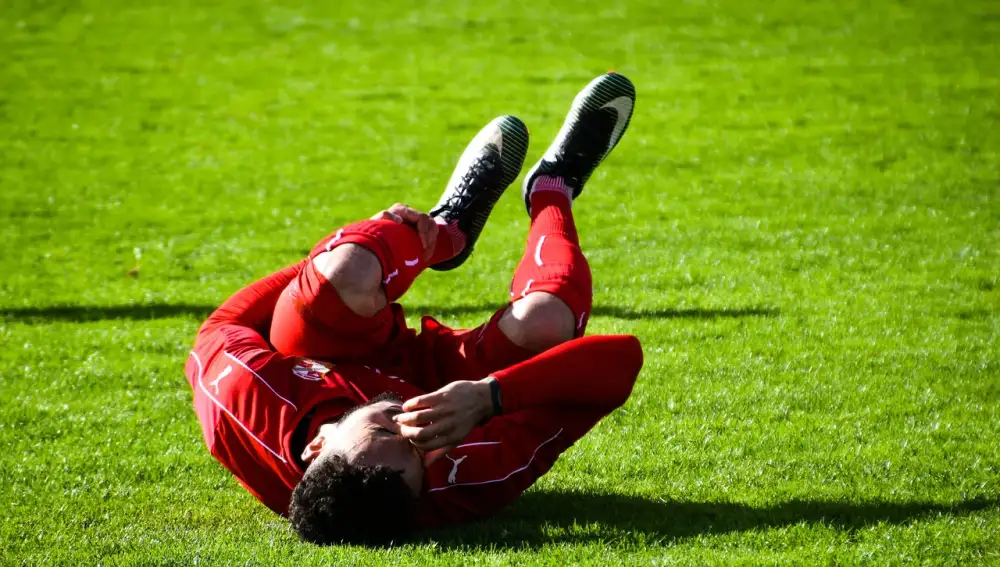Swinging for Pain Relief: Understanding and Preventing Mid Back Pain from Golf Swings

- Understanding the mechanics of a golf swing
- Common causes of mid back pain from golf swings
- The role of poor posture in golf-related back pain
- The importance of proper warm-up and stretching exercises
- Tips for preventing mid back pain during a golf swing
- Seeking professional help for persistent back pain
Golf is a popular sport enjoyed by millions around the world. However, it is not without its risks, particularly when it comes to mid back pain caused by improper golf swings. Understanding the mechanics of a golf swing and the common causes of back pain can help golfers prevent and alleviate discomfort. In this article, we will explore the various factors that contribute to mid back pain from golf swings and provide tips on how to prevent such pain. By implementing proper warm-up exercises, maintaining good posture, and seeking professional help when needed, golfers can enjoy their favorite sport without the burden of back pain.
Understanding the mechanics of a golf swing
Understanding the mechanics of a golf swing is crucial in preventing mid back pain. The swing involves a sequence of movements that put stress on the muscles, ligaments, and joints in the mid back area. During the backswing, the torso rotates while the arms and club move backward. This rotation places strain on the muscles surrounding the spine. As the golfer transitions into the downswing, there is a rapid change in direction and an explosive release of energy, which can further exacerbate any existing strain or injury. It is important to have proper technique and body alignment to minimize stress on the mid back during each phase of the swing.
Common causes of mid back pain from golf swings
Common causes of mid back pain from golf swings can be attributed to several factors. One common cause is the excessive rotation and twisting of the spine during the swing, which can strain the muscles and ligaments in the mid back area. Another cause is poor technique, such as using too much force or an incorrect swing plane, which puts additional stress on the mid back. Additionally, overuse or repetitive movements without proper rest can lead to muscle imbalances and inflammation in the mid back region. It is important for golfers to be aware of these potential causes in order to prevent and address mid back pain effectively.
The role of poor posture in golf-related back pain
Poor posture during a golf swing can significantly contribute to mid back pain. When a golfer has improper alignment and posture, it puts excessive strain on the muscles, ligaments, and joints of the mid back. This can lead to muscle imbalances, increased tension in the thoracic spine, and even spinal misalignment.
One common issue is rounding of the shoulders and hunching forward during the swing. This position restricts the rotation of the thoracic spine and places excessive stress on the surrounding muscles. Over time, this can result in muscle fatigue, tightness, and ultimately mid back pain.
Another factor is an excessive arching or extension of the lower back during the swing. This places increased pressure on the discs between the vertebrae and can cause irritation or inflammation in the mid back region.
To prevent these issues, it is crucial for golfers to maintain proper posture throughout their swings. This includes keeping the shoulders back and down, maintaining a neutral spine position, and engaging core muscles for stability. Regular strengthening exercises for postural muscles can also help improve overall alignment and reduce strain on the mid back.
By addressing poor posture habits and focusing on maintaining proper alignment during a golf swing, golfers can greatly reduce their risk of experiencing mid back pain.
The importance of proper warm-up and stretching exercises
Proper warm-up and stretching exercises play a crucial role in preventing mid back pain during a golf swing. Before hitting the course, it is essential to prepare your body by engaging in dynamic stretches that target the muscles used in the golf swing. This helps increase blood flow and flexibility, reducing the risk of injury. Incorporating exercises such as trunk rotations, shoulder rolls, and side bends can loosen up your mid back muscles and improve range of motion. Additionally, performing static stretches after your round can help alleviate muscle tension and promote recovery. Remember, dedicating just a few minutes to warm-up and stretching can make a significant difference in preventing mid back pain on the golf course.
Tips for preventing mid back pain during a golf swing
1. Maintain good posture: Stand tall with your shoulders back and avoid slouching or hunching over the ball. This helps to distribute the forces evenly throughout your spine.
2. Strengthen your core muscles: A strong core provides stability and support for your spine during the golf swing. Incorporate exercises like planks, bridges, and rotational movements into your fitness routine.
3. Warm-up properly: Before starting your round of golf, take some time to warm up your body. Perform dynamic stretches that target the muscles used in a golf swing, such as shoulder rotations and torso twists.
4. Use proper technique: Work with a golf professional to ensure you have correct form and technique. Proper alignment, grip, and swing mechanics can help reduce stress on your mid back.
5. Avoid overexertion: Take breaks during long practice sessions or rounds of golf to rest and stretch. Pushing yourself too hard can lead to fatigue and increased risk of injury.
6. Listen to your body: If you experience any discomfort or pain during a swing, stop immediately and assess what may be causing it. Ignoring pain can lead to further injury.
By following these tips, you can minimize the risk of mid back pain while enjoying the game of golf. Remember that prevention is key, so prioritize proper technique, posture, warm-up exercises, and seek professional help if needed for persistent pain or injuries.
Seeking professional help for persistent back pain
Seeking professional help for persistent back pain is crucial to prevent further damage and find effective treatment options. If you experience ongoing mid back pain from golf swings, it is recommended to consult a healthcare professional specializing in sports medicine or orthopedics. They can accurately diagnose the underlying cause of your pain and develop a personalized treatment plan. Physical therapists can provide targeted exercises and stretches to strengthen the muscles involved in your golf swing and improve posture. In some cases, chiropractic care or massage therapy may be beneficial for relieving muscle tension and realigning the spine. Remember, early intervention and proper medical guidance are key to managing and preventing long-term back pain.
In conclusion, understanding the mechanics of a golf swing and the common causes of mid back pain is crucial for preventing and managing this issue. Poor posture during a swing can put excessive strain on the mid back, leading to pain and discomfort. Incorporating proper warm-up and stretching exercises before playing can help prepare the body for the physical demands of golf. Additionally, practicing good technique and using proper equipment can also reduce the risk of mid back pain. If persistent back pain occurs, it is important to seek professional help from a healthcare provider or physical therapist. By taking these preventive measures and seeking appropriate care, golfers can enjoy their game without being hindered by mid back pain.
Published: 29. 02. 2024
Category: Health



